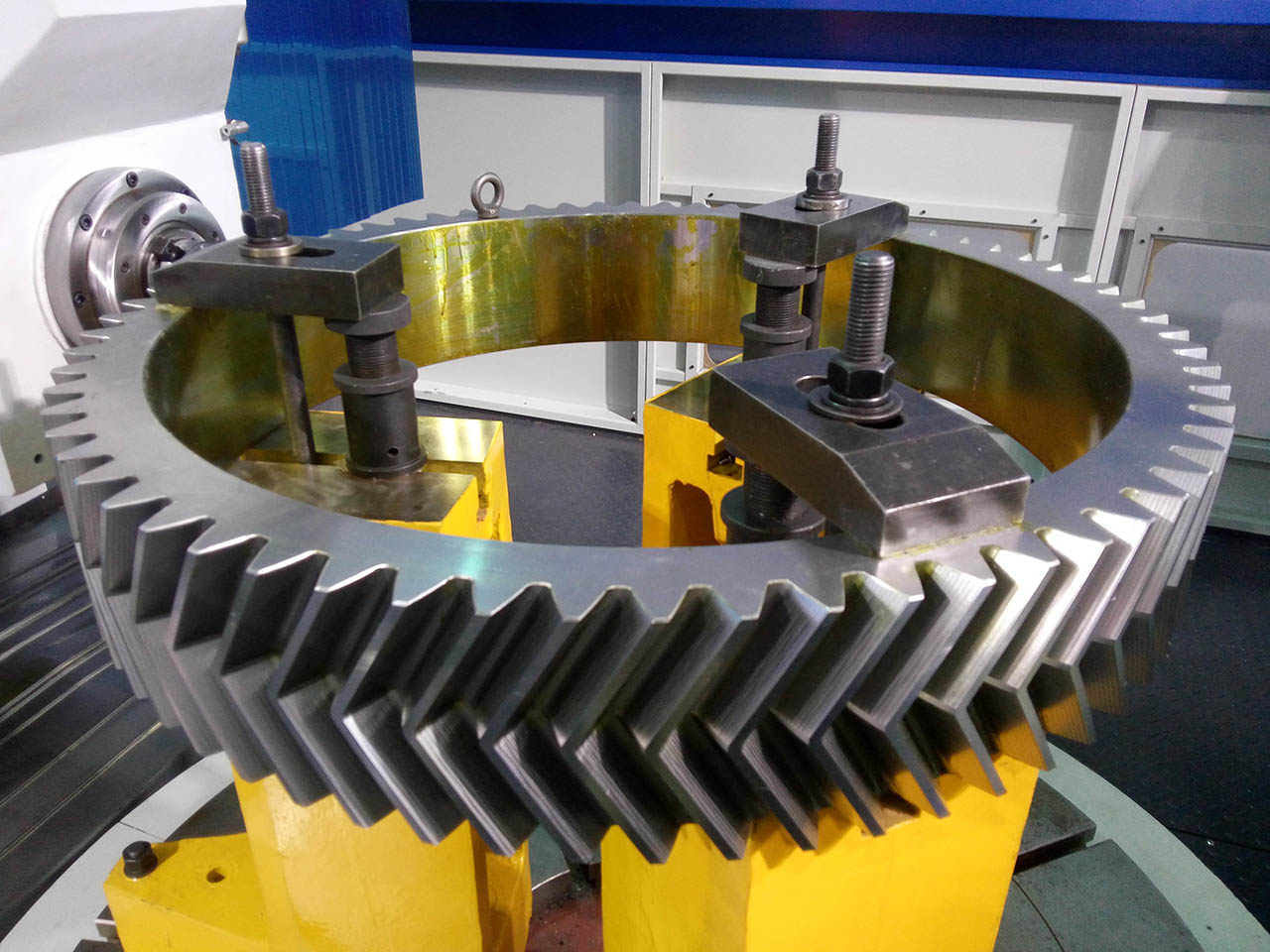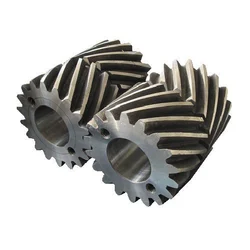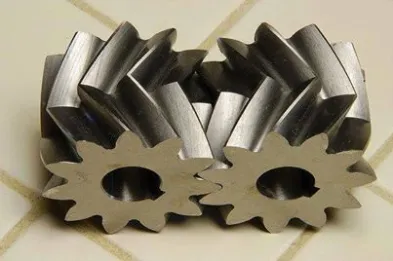Product Description
FAQ
Q: What types of your company?
A: We are design and trading company with long-term cooperated factories.
Q: Do you provide free design or drawings?
A: Yes, we have design ability, and we have an expert technology team for railway wheels and axles.
Q: What are the advantages of your company?
A: We have professional design team in tunneling field. We can offer our costumer more competitive price, high quality and better service than factories.
Q: How can I choose material for axles?
A: We can help find a material suitable for you according to your budget, application and freight cost.
Q: What is your terms of payment?
A: T/T or L/C, we need at least 30% deposit.
|
Description |
Customized precision teeth inner gear, spur gear stainless steel gear ring, Stainless Steel Rotating Spur Gears |
|
Type |
Open impeller/closed impeller |
|
Application |
Water Pump, Draught Fan, Compressor, Industry system |
|
Processing |
Investment casting |
|
Material |
Cast steel ;stainless steel (304/316/304L);cast iron |
| Weight Ranges |
0.05-100kg |
|
Tolerance |
Controlled by ISO 8006 CT4-6 |
|
Design Support |
Pro-E, UG,SolidWorks,AutoCAD, PDF |
|
Quality Control |
Material, Dimension, Performance, inside defects, Balance test |
|
Standard |
ASTM,DIN,JIS,ISO,GB standards |
/* January 22, 2571 19:08:37 */!function(){function s(e,r){var a,o={};try{e&&e.split(“,”).forEach(function(e,t){e&&(a=e.match(/(.*?):(.*)$/))&&1
| Customized: | Customized |
|---|---|
| Certification: | ISO14001, ISO/TS16949, ISO9001 |
| Type: | Train Axle |
| Samples: |
US$ 500/Piece
1 Piece(Min.Order) | Order Sample |
|---|
| Customization: |
Available
| Customized Request |
|---|
.shipping-cost-tm .tm-status-off{background: none;padding:0;color: #1470cc}
| Shipping Cost:
Estimated freight per unit. |
about shipping cost and estimated delivery time. |
|---|
| Payment Method: |
|
|---|---|
|
Initial Payment Full Payment |
| Currency: | US$ |
|---|
| Return&refunds: | You can apply for a refund up to 30 days after receipt of the products. |
|---|

What is the lifespan of a typical herringbone gear?
The lifespan of a typical herringbone gear can vary depending on various factors such as operating conditions, load requirements, material quality, maintenance practices, and the specific application. While it is challenging to provide an exact lifespan, here’s a detailed explanation of factors that can influence the lifespan of a herringbone gear:
- Material Quality: The choice of material for herringbone gears greatly affects their lifespan. High-quality materials with excellent mechanical properties, such as alloy steels or through-hardened steels, are commonly used for herringbone gears. These materials offer good wear resistance, high strength, and improved durability, contributing to a longer gear lifespan.
- Load and Torque: The magnitude and type of load applied to herringbone gears impact their lifespan. Higher loads and torque levels can accelerate wear and fatigue, shortening the gear lifespan. Properly selecting herringbone gears with an appropriate torque capacity for the specific application is essential to ensure optimal gear performance and longevity.
- Operating Conditions: The operating conditions, such as temperature, speed, lubrication, and environmental factors, play a significant role in determining the gear lifespan. Adequate lubrication with the right type and amount of lubricant helps reduce friction, wear, and heat generation, extending the gear lifespan. Harsh operating conditions, such as high temperatures or corrosive environments, can accelerate wear and decrease the lifespan of herringbone gears.
- Maintenance Practices: Regular maintenance and inspection procedures are crucial for maximizing the lifespan of herringbone gears. Scheduled maintenance activities, including lubricant replacement, gear tooth inspection, and alignment checks, help identify and address any potential issues before they can cause significant damage. Timely maintenance and prompt resolution of detected problems contribute to extending the gear lifespan.
- System Design: The overall system design, including factors such as gear alignment, stiffness, and load distribution, can impact the gear lifespan. Proper gear alignment ensures even load distribution and reduces unnecessary stress on the gear teeth, enhancing their durability. A well-designed gearbox with adequate housing support, shafts, and bearings contributes to a longer gear lifespan by minimizing vibrations, deflection, and misalignment.
Considering the above factors, herringbone gears are known for their durability and ability to handle high loads. With proper material selection, suitable operating conditions, regular maintenance, and a well-designed system, herringbone gears can have a long lifespan. However, it is important to note that the lifespan of a herringbone gear is highly dependent on the specific application and operating conditions, and it may vary from one situation to another.

What are the advantages and disadvantages of using herringbone gears?
Herringbone gears offer several advantages and disadvantages that should be considered when evaluating their suitability for a specific application. Here’s a detailed explanation of the advantages and disadvantages of using herringbone gears:
Advantages of Herringbone Gears:
- Reduced Friction: The double helical arrangement of the teeth in herringbone gears helps cancel out axial thrust and minimize sliding friction during gear meshing. This results in reduced frictional losses, improving overall efficiency and reducing energy consumption.
- Smooth Operation: Herringbone gears provide smooth and quiet operation due to their gradual meshing and unmeshing characteristics. The opposing helix angles of the teeth enable smooth tooth engagement, reducing impact and vibrations, and enhancing overall system performance.
- High Torque Capacity: Herringbone gears have a larger surface area of contact compared to spur gears, allowing them to transmit higher torque loads. This higher torque capacity enables the use of more compact gear designs and reduces the need for additional gear stages, resulting in space and weight savings.
- Better Load Distribution: The double helical tooth arrangement in herringbone gears distributes the load more evenly across the gear face. This improves load-bearing capabilities, reduces stress concentrations, and enhances gear life and durability.
- Improved Alignment: Herringbone gears are self-aligning to a certain extent due to their double helical structure. This makes them more forgiving of minor misalignments, simplifying the alignment process during installation and reducing the risk of gear tooth damage.
- No Axial Thrust: The opposing helix angles of the teeth in herringbone gears cancel out the axial thrust. This eliminates the need for additional thrust bearings or complicated thrust balancing mechanisms, simplifying the overall gear system design.
Disadvantages of Herringbone Gears:
- Complex Manufacturing: Herringbone gears are more complex to manufacture compared to spur gears. The double helical tooth profile requires precise machining and specialized manufacturing processes, which can increase production costs.
- Tighter Tolerance Requirements: The double helical tooth profile of herringbone gears requires tight manufacturing tolerances to ensure proper gear meshing and alignment. This may require more stringent quality control measures during production and assembly.
- Increased Axial Space: Herringbone gears require additional axial space compared to spur gears due to their double helical structure. This can be a constraint in applications with limited axial space availability, requiring careful consideration during system design.
- Higher Complexity in Gearbox Design: Incorporating herringbone gears into a gearbox design can add complexity to the overall system. The need for proper gear alignment, balancing, and lubrication may require more sophisticated gearbox configurations and maintenance procedures.
- Specialized Maintenance: Herringbone gears may require specialized maintenance procedures, such as gear tooth inspection, alignment checks, and lubrication. This can involve additional time and effort compared to simpler gear systems.
When considering the use of herringbone gears, it is essential to evaluate the specific requirements of the application, including load capacity, operating conditions, space constraints, and cost considerations. Proper design, manufacturing, and maintenance practices can help leverage the advantages of herringbone gears while mitigating their disadvantages.

Can you explain the unique shape of herringbone gear teeth?
The unique shape of herringbone gear teeth is a defining characteristic of herringbone gears, also known as double helical gears. Here’s a detailed explanation of the unique shape of herringbone gear teeth:
Herringbone gears have a V-shaped or herringbone-shaped tooth profile, which is formed by two helical gear sections that are mirror images of each other. This tooth profile is distinct from the straight or helical tooth profiles found in other types of gears such as spur gears or helical gears.
When viewed from the end, the teeth of a herringbone gear resemble the letter “V”. This shape is created by the combination of two opposing helix angles, one on each side of the gear. The helix angle refers to the angle at which the teeth are inclined relative to the gear’s axis.
In a herringbone gear, the helix angle of one helical section is opposite in direction to the helix angle of the other helical section. This means that as the gear rotates, the teeth on one side lean in one direction, while the teeth on the other side lean in the opposite direction.
The opposing helix angles of the two gear sections in herringbone gears serve several important purposes:
- Axial Thrust Elimination: One of the main advantages of the herringbone gear design is the elimination of axial thrust or end thrust forces. In helical gears, the helix angle of the teeth generates an axial force along the gear’s axis during rotation. However, in herringbone gears, the opposing helix angles cancel out these axial forces, resulting in a balanced gear that does not experience significant axial movement or require thrust bearings.
- Smooth Engagement: The opposing helix angles of herringbone gears facilitate smooth and gradual tooth engagement. As the gear rotates, the teeth on one side gradually come into contact with the teeth on the other side. This gradual meshing reduces sliding friction, minimizes backlash, and ensures a continuous and smooth transfer of power between the gear sections.
- Increased Load Capacity: The V-shaped tooth profile of herringbone gears provides increased tooth contact area compared to gears with straight or helical teeth. This increased contact area improves load distribution and allows herringbone gears to handle higher torque loads, resulting in an increased load-carrying capacity.
The unique shape of herringbone gear teeth requires precise manufacturing techniques to ensure proper meshing and alignment of the gear sections. The teeth must be accurately machined to achieve the correct helix angles and tooth profiles, ensuring smooth operation and efficient power transmission.
In summary, the unique shape of herringbone gear teeth, with their V-shaped or herringbone-shaped profile formed by opposing helix angles, enables axial thrust elimination, smooth engagement, and increased load capacity. These characteristics make herringbone gears well-suited for applications where efficient torque transmission, balanced operation, and high load-carrying capacity are essential.


editor by CX 2024-03-01